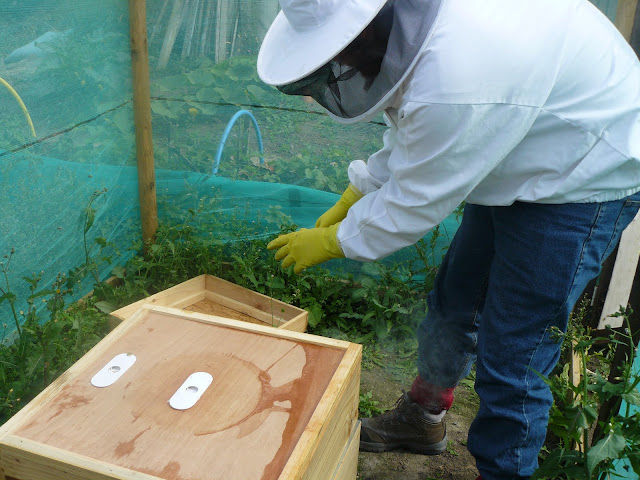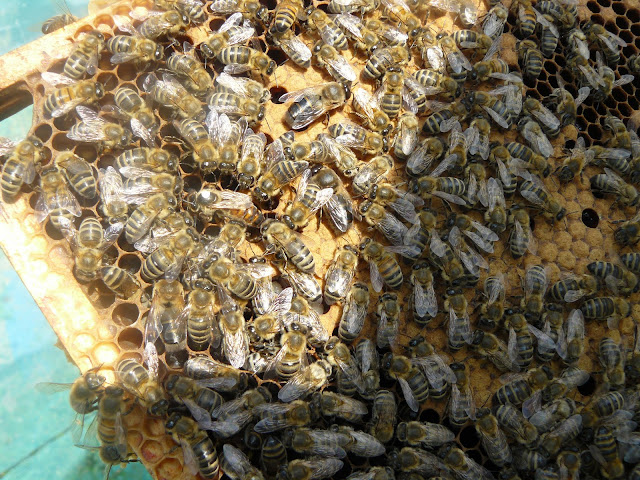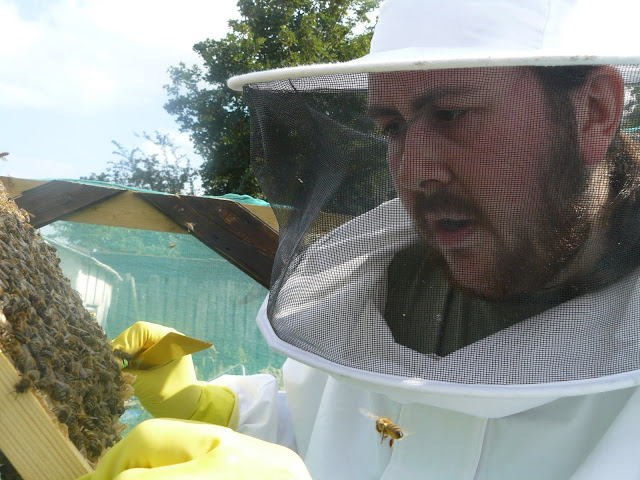Over the last couple of weeks I got an email from Wakefield and Pontefract Beekeepers telling me that there was a potential new Beekeeper in the village I live in. They passed me his contact details and today we arranged to meet up so I could show him my Bees. He had already been to see another apiary in the village, but the other apiary had several more hives than mine, I believe he said around 15 hives all together!
At around 3PM I met up with him and we headed up to the apiary together. Upon arrival we suited up and lit the smoker then headed into the apiary. The first job I did was remove the varroa board and scrape the contents into a box so I could do a varroa count later on. After that I handed the camera over to him and asked if he would take photos as I went.
 |
| First I took the roof off |
 |
| Next I removed the super and put it to one side exposing the Queen excluder |
 |
| Then the Queen excluder was removed, making sure the Queen wasn't on the underside |
 |
| I then removed the plastic dummy board |
 |
| The first frame with capped stores |
 |
| The capped cells in this one are worker brood |
 |
| Queen Beeatrix with her entourage |
 |
| Me and a Bee inspecting a frame |
 |
| Holding the hive tool so it's at hand when needed |
 |
| I tried to remove as much of the excess comb on the top of the frames |
 |
| A frame from the supers |
 |
| Capped honey stores |
 |
| Looking into a super |
After we had checked all the frames in both the supers and the brood chamber I added another super so there are now 2 supers on the hive; this gives the Bees plenty more room to store honey as there is a good honey flow on at the moment.
When I had dropped my visitor off I returned home and poured the contents from the varroa floor onto a sheet of white paper and counted the mites on there. I counted 14 mites and then using the calculator on the Beebase website I got the following information:
Average Daily Mite Fall = 2.0 varroa mites
Estimated number of adult varroa mites in the colony = 80
Treatment is recommended in about 2 month(s) time (counting from day of first monitoring).
 |
| Varroa mites |
Awesome post, those bees look great
ReplyDeleteWell done mate! Awesome!!!!! Them little guys are important to us!!! Any news on allotments?
ReplyDeleteSorry, no news on allotment yet. I've lost hope that we'll get them from the landshare website. A friend of mine has managed to get one and she may be sharing it with me but I would still much prefer one closer to home.
ReplyDeleteI am quite pleased with my Bees, they seem to be thriving.